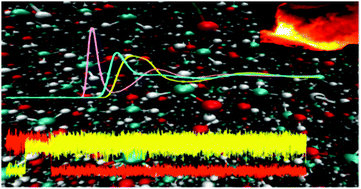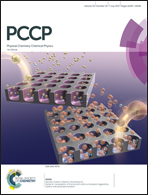Methanol–methanol and methanol–water systems: the intermolecular interactions controlling the transition from small clusters to the liquid phase†
Abstract
The present paper focuses on the characterization of the properties of methanol and water molecules in gas and liquid environments. A force field for methanol–methanol and methanol–water interactions, useful to be applied in Molecular Dynamics (MD) simulations, is proposed. The electrostatic interaction contributions, arising from permanent charge and/or from anisotropic charge distributions originating from permanent electric multipoles (Vel), different in gas and in liquid phases, are combined with the non electrostatic ones (Vnel), defined by means of Improved Lennard-Jones (ILJ) functions [F. Pirani et al., Phys. Chem. Chem. Phys., 2008, 10, 5489–5503]. Interestingly, the relevant parameters of the ILJ functions are not fitted to reproduce the selected properties of the systems but calculated from the molecular polarizability, which is considered the key property to define size (or Pauli) repulsion and dispersion and induction attractions. The constructed force field predicts binding energies and geometries of the methanol–methanol and methanol–water dimers, in good agreement with available data. On the other hand, several bulk and structural properties of liquid methanol, such as densities, vaporization enthalpies, diffusion coefficients, coefficients of cubic thermal expansion, heat capacities at constant pressure and some relevant radial distribution functions, calculated considering 2744 molecules and different conditions of pressure and temperature, have also been found to be in good agreement with experimental data. The study has been completed by calculating the density values at 298 K and 1 bar of some methanol–water mixtures, which have also been found to be in good agreement with experimental data.



 Please wait while we load your content...
Please wait while we load your content...